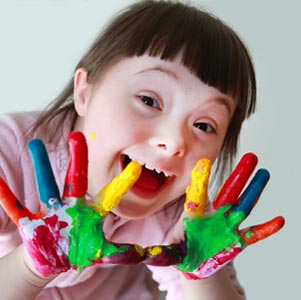Our Shared Language
Having a shared language is important to us as we want to work together as a whole workforce for children and families. This means our shared language will:
- strengthen how we work together
- help us have a shared understanding of need, risk and vulnerability
- help us to have a shared understanding of success for every child

Using a shared language:
Our key phrases have lots of examples of the language we need to be using. This is a working document and will continue to grow and develop as we become more familiar with New Ways of Working. Send in any examples you are using. Share how your language is changing as a result of new ways of working.
The glossary explains what words and acronyms mean in our different organisations.
Send all examples to PiP.Admin@cheshirewestandchester.gov.uk
-
Our Key Phrases
In using a trauma lens we are able to start to describe the behaviours that we see, not define the person through their behaviours (McClure, 2017). We can reflect this through our written words, daily conversations and all our work with children, young people and their families
Current language, thinking, phrases and labels Moving to New language and understanding Aggressive What does this tell me Frightened Attainment Recognising every step of achievement Attention seeking Implies demanding and controlling Needing security Avoidant Seeing as being difficult to engage - What does this mean? In flight survival mode Case Statement does not imply value See me as a person Challenging behaviour Identifying the person through their behaviour. Consider what this means? Distressing behaviour Choosing to do this/voting with their feet … Implies that this is a choice and associates blame What is the child or young person telling me? Are they experiencing fear, trauma, being threatened/coerced, exploited? Compliance and consequences Understanding the root causes of behaviour and working with, not done to Defiant In fight mode, coping with a threat Demanding, challenging, difficult absorbing professionals time Relentless compassion – finding innovative solutions Did not attend Was not brought, unable to make the meeting/appointment/has missed the appointment today… Disguised compliance Implies blame Draw on professional curiosity Done to … Work with … Drug running
Work, Recruit , RunImplies choice … not reflective of the cohesion and control threats, violence exploitation, experiencing The child or young person is being criminally exploited Labelling / making assumptions/ unable to change Reinforces person’s internal belief through language Build self-efficacy to support, build confidence and motivation Non engagement /non compliant Implies blame and shame How can we work differently?
Focus on strengths and positive reframeNot engaging Does not feel safe yet … Promiscuous behaviour, child prostitution, prostituting themselves Implies choice … not reflective of the cohesion control, threats, violence exploitation, grooming being experienced The child / young person is being trafficked for the purpose of criminal exploitation Putting themselves at risk Blaming statement implying there is choice or control Why has this happened? What does this mean? What is the root cause? Rude What does this really mean? Self protective Treat and deal with …. Implies lack of value and respect Respond and enable …. - Shame
- Blame
- Guilt
- Nurturing
- Healing
- Understanding
Unacceptable behaviour Behaviour is not responding to the expectations of the environment Understandable behaviour (seeing behaviour in the context of the individual’s trauma Using number/patient/or case to identify a child or person See me for who I am, talk to me and refer to me as an individual Violent child/ young person Expressing traumatised behaviour in fight survival mode What has happened to you… Implying blame to understanding root causes Why has this happened Withdrawn What does this mean? Cautious – survival response References
Beacon House, 2019 https://beaconhouse.org.uk/wp-content/uploads/What-We-Say-Comic-1.pdf contextualsafeguarding.org.uk,
Interface Enterprises Ltd, 2019
McClure, K, 2017 https://www.relias.com/blog/what-is-trauma-sensitive-language -
The Glossary
The glossary aims to support and develop a shared language and understanding.
We need your help to grow this glossary. Please send your organisation/agency contributions to PIP.admin@cheshirewestandchester.gov.uk
For more information about wider services and forums within West Cheshire please refer to the following site: West Cheshire Local Offer
Acronym Description ABE
Achieving Best Evidence
ACE
Adverse Childhood Experience
AP
Alternative Provision
ASD
Autism Spectrum Disorder
BIA
Best Interest Assessor
CAMHS
Child and Adolescent Metal Health Service
CCE
Child Criminal Exploitation
CCG
Clinical Commissioning Group
CE
Child Exploitation
CEOP
Child Exploitation and Online Protection
CIC
Children in Care
CICC
Children In Care Council
CIN
Children in Need
CPP
Child Protection Plan
CSC
Children’s Social Care
CSP
Children’s Safeguarding Partnership
CYP
Children and Young People
DBT
Dialectical Behaviour Therapy
DDP
Dyadic Development Psychotherapy
EBSN
Emotional Based School Non Attendance
EET
Education Employment or Training
EHC
Education Health and Care Plan
EHP
Early Help and Prevention
ELSA
Emotional Literacy Support Assistant
FASD
Foetal Alcohol Spectrum Disorder
FCW
Family Case Worker
FNP
Family Nurse Partnership
i-ART
Integrated Access and Referral Team
IDVA
Independent Domestic Violence Advocate
IHA
Initial Health Assessment
IPS
Individual Placement Support
LAC
Looked After Child
MARAC
Multi Agency Risk Assessment Conference
MCA
Mental Capacity Act
MECC
Making Every Contact Count
MHFA
Mental Health First Aid
MI
Motivational Interviewing
Acronym Description NAI
Non Accidental Injury
NEET
Young People Not in Education, Employment or Training
NSSI
Non Suicidal Self Injury
OFSTED
The Office for Standards in Education, Children’s Services and Skills
PCF
Parent Carer Forum
PCF
Professional Capabilities Framework
PH
Public Health
PPU
Public Protection Unit
PTSD
Post Traumatic Stress Disorder
RIC
Risk Indicator Checklist
RPA
Raising of the Participation Age
SCIE
Safeguarding Children in Education
SEF
Self-Evaluation Form
SEN
Special Educational Need
SGO
Special Guardianship Order
SHARP
School Help and Reporting Page
SSYP
Safer Schools and Young People Partnership
TAF
Team Around the Family
Thrive
Cheshire West and Chester Council Corporate Objectives
Thrive
Emotional Health and Wellbeing for Children and Young People
TIP
Trauma Informed Practice
VS
Virtual School
WDP
Westminster Drug Project
WNB
Was not brought
YOS
Youth Offending Service


